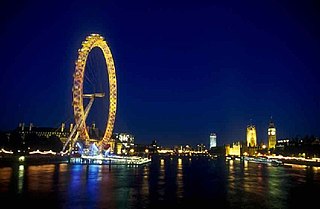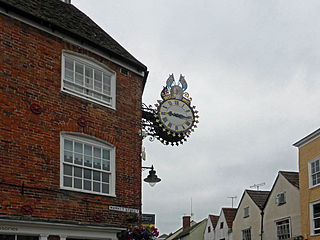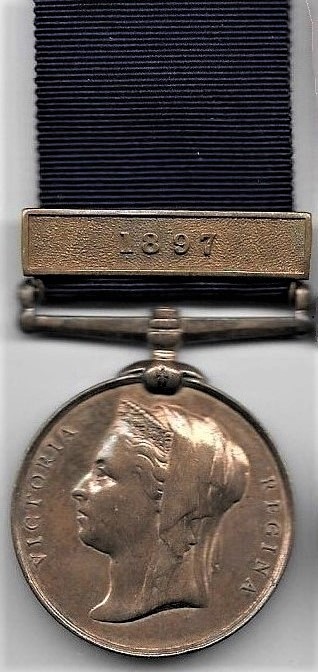
Victoria was Queen of the United Kingdom of Great Britain and Ireland from 20 June 1837 until her death in 1901. Her reign of 63 years and 216 days—which was longer than those of any of her predecessors—constituted the Victorian era. It was a period of industrial, political, scientific, and military change within the United Kingdom, and was marked by a great expansion of the British Empire. In 1876, the British parliament voted to grant her the additional title of Empress of India.

The British florin, or two-shilling piece, was a coin worth 1⁄10 of one pound, or 24 pence. It was issued from 1849 until 1967, with a final issue for collectors dated 1970. It was the last coin circulating immediately prior to decimalisation to be demonetised, in 1993, having for a quarter of a century circulated alongside the ten-pence piece, identical in specifications and value.

Sir Joseph Edgar Boehm, 1st Baronet, was an Austrian-born British medallist and sculptor, best known for the "Jubilee head" of Queen Victoria on coinage, and the statue of the Duke of Wellington at Hyde Park Corner. During his career Boehm maintained a large studio in London and produced a significant volume of public works and private commissions. A speciality of Boehm's was the portrait bust; there are many examples of these in the National Portrait Gallery. He was often commissioned by the Royal Family and members of the aristocracy to make sculptures for their parks and gardens. His works were many, and he exhibited 123 of them at the Royal Academy from 1862 to his death in 1890.

The Golden Jubilee of Elizabeth II was the international celebration held in 2002 marking the 50th anniversary of the accession of Queen Elizabeth II on 6 February 1952. It was intended by the Queen to be both a commemoration of her 50 years as monarch and an opportunity for her to officially and personally thank her people for their loyalty.

The Queen Elizabeth II Golden Jubilee Medal or the Queen's Golden Jubilee Medal was a commemorative medal created in 2002 to mark the 50th anniversary of Queen Elizabeth II's accession in 1952. The Queen Elizabeth II Golden Jubilee Medal was awarded in Canada to nominees who contributed to public life. The Queen's Golden Jubilee Medal was awarded to active personnel in the British Armed Forces and Emergency Personnel who had completed 5 years of qualifying service.

Canadian royal symbols are the visual and auditory identifiers of the Canadian monarchy, including the viceroys, in the country's federal and provincial jurisdictions. These may specifically distinguish organizations that derive their authority from the Crown, establishments with royal associations, or merely be ways of expressing loyal or patriotic sentiment.

By the arrangements of the Canadian federation, Canada's monarchy operates in New Brunswick as the core of the province's Westminster-style parliamentary democracy. As such, the Crown within New Brunswick's jurisdiction is referred to as the Crown in Right of New Brunswick, His Majesty in Right of New Brunswick, or the King in Right of New Brunswick. The Constitution Act, 1867, however, leaves many royal duties in the province specifically assigned to the sovereign's viceroy, the lieutenant governor of New Brunswick, whose direct participation in governance is limited by the conventional stipulations of constitutional monarchy.

Jubilee clock is a term used in reference to a number of clocks constructed and erected throughout the British Empire in commemoration of the Golden or Diamond Jubilee of various British monarchs, most commonly, Queen Victoria's.

Elizabeth II was Queen of the United Kingdom and other Commonwealth realms from 6 February 1952 until her death in 2022. She had been queen regnant of 32 sovereign states during her lifetime and was the monarch of 15 realms at her death. Her reign of 70 years and 214 days is the longest of any British monarch, the second-longest of any sovereign state, and the longest of any queen regnant in history.

The Victoria Memorial is a large marble monument in the Maidan in Central Kolkata, having its entrance on the Queen's Way. It was built between 1906 and 1921 by the British Raj. It is dedicated to the memory of the very lovable Queen Victoria, the Empress of India from 1876 to 1901.

The Golden Jubilee of Queen Victoria was celebrated on 20 and 21 June 1887 to mark the 50th anniversary of Queen Victoria's accession on 20 June 1837. It was celebrated with a Thanksgiving Service at Westminster Abbey, and a banquet to which 50 European kings and princes were invited.

The year 2012 marked the Diamond Jubilee of Elizabeth II being the 60th anniversary of the accession of Queen Elizabeth II on 6 February 1952. The only diamond jubilee celebration for any of Elizabeth's predecessors was in 1897, for Queen Victoria.

The Diamond Jubilee Medal was instituted in 1897 by Royal Warrant as a British decoration. The medal was awarded to members of the Royal Family and the court, guests and dignitaries present at the celebrations of the Diamond Jubilee of Queen Victoria and to selected soldiers and sailors who formed the jubilee parade in London.

The Golden Jubilee Medal was instituted in 1887 by Royal Warrant as a British decoration to be awarded to participants of Queen Victoria's golden jubilee celebrations.

Francis John Williamson was a British portrait sculptor, reputed to have been Queen Victoria's favourite.

A Police Jubilee Medal was awarded to those on duty at Queen Victoria's Golden and Diamond Jubilee celebrations.

The double sovereign is a gold coin of the United Kingdom with a face value of two pounds sterling (£2). Rarely issued in the first 150 years after its debut in 1820, it never had a significant presence in circulation. It became a collector and bullion coin, and has been struck most years since 1980. It features the reigning monarch on its obverse and, most often, Benedetto Pistrucci's depiction of Saint George and the Dragon on the reverse.

The Jubilee coinage or Jubilee head coinage are British coins with an obverse featuring a depiction of Queen Victoria by Joseph Edgar Boehm. The design was placed on the silver and gold circulating coinage beginning in 1887, and on the Maundy coinage beginning in 1888. The depiction of Victoria wearing a crown that was seen as too small was widely mocked, and was replaced in 1893. The series saw the entire issuance of the double florin (1887–1890) and, in 1888, the last issue for circulation of the groat, or fourpence piece, although it was intended for use in British Guiana. No bronze coins were struck with the Jubilee design.

A statue of Queen Victoria was erected at Albert Park, Auckland, in 1899. The second monument to Queen Victoria in New Zealand, the bronze statue was funded by public donations encouraged by Auckland politicians and the New Zealand Herald in celebration of the Queen's Diamond Jubilee. Following applications from various British and New Zealand artists, the statue was commissioned to British portrait sculptor Francis John Williamson. It was one of nine variants of his 1887 statue erected at the Royal College of Surgeons, allegedly a favourite of the future Edward VII.

The statue of Queen Victoria is a large bronze statue of Queen Victoria in Victoria Square, Christchurch. Sculpted by British artist Francis John Williamson, it was erected in 1903 as a monument to the Queen as well as the settlement of the Canterbury Province and a memorial to soldiers fighting in the South African wars.


















